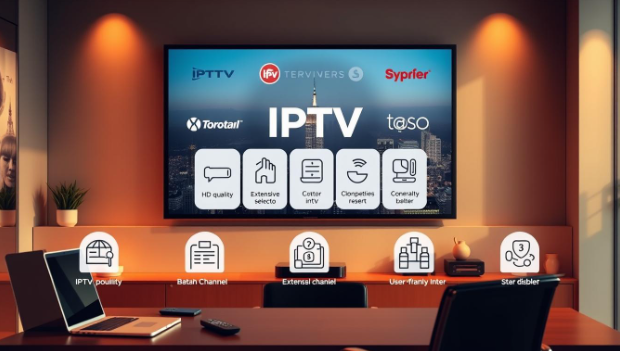How do VPNs improve privacy and performance for IPTV users?

Encrypted network connections transform how viewers access streaming content by providing enhanced security protocols and improved connection pathways for internet-based television services. It’s common to iptv kopen while also setting up VPN access to support smoother and safer viewing sessions. These networking solutions establish secure communication channels while resolving common streaming challenges like bandwidth limitations, content restrictions, and privacy concerns that affect regular viewing experiences.
Privacy shields online activity
Virtual private networks create encrypted tunnels that conceal your streaming activities from internet service providers, government agencies, and third-party monitoring systems that routinely track online behaviors. Your viewing preferences, program selections, and streaming schedules remain hidden behind military-grade encryption protocols that scramble data transmission between your devices and content servers. Personal information protection extends beyond simple browsing privacy, including payment details, account credentials, and viewing histories that streaming platforms collect for analytics and marketing purposes. A secure connection prevents unauthorised access to sensitive data during transmission or interception by malicious actors seeking to exploit personal information.
Connection quality improves streaming
Bandwidth throttling elimination helps bypass internet service provider restrictions that deliberately slow streaming traffic during peak usage hours or when high-volume content consumption is detected. Virtual private networks mask streaming data patterns, preventing targeted speed reductions that cause buffering interruptions and poor video quality.
- Server routing through optimized network pathways
- Reduced latency between devices and content servers
- Bypassing internet infrastructure bottlenecks during busy periods
- Priority routing through networks that favour video content delivery
- Connection stability improvements during high-demand streaming times
Network congestion avoidance directs traffic through alternative routing pathways that experience less crowding than standard internet routes. This redirection often results in faster connection speeds and more consistent streaming performance, particularly during evening hours when household internet usage peaks across residential networks.
Geographic barriers removed
- Content licensing restrictions limit programming availability based on detected internet connection locations, preventing access to international content libraries that may offer superior programming options compared to local alternatives. Virtual private network servers in different countries can potentially expand content accessibility by routing connections through various geographic regions.
- Regional broadcasting differences provide alternative commentary, analysis, and presentation styles for the same sporting events or news programs. International broadcasting often includes different camera angles, expert perspectives, and cultural viewpoints that enhance viewing experiences beyond standard domestic coverage options.
- Time zone flexibility enables access to live programming that broadcasts at convenient hours in different regions, allowing viewers to watch events during preferred scheduling windows rather than being restricted to local broadcast times that may conflict with personal routines.
Technical performance enhanced
Quality optimization features prioritize streaming traffic over other internet activities, ensuring smooth video playback even when multiple devices compete for available bandwidth within your household network. This prioritization maintains consistent streaming quality during periods of heavy internet usage.
- Automatic server selection based on current performance metrics
- Real-time connection monitoring and switching capabilities
- Traffic compression techniques that reduce bandwidth consumption
- Protocol optimization for streaming-specific data transmission
- Connection redundancy through multiple server pathways
Streaming protocol improvements adapt data transmission methods to match current network conditions, automatically adjusting compression levels and transmission speeds to maintain optimal viewing quality without manual intervention or technical knowledge requirements. These technologies address fundamental limitations of standard internet connections while preserving user anonymity and data security. Proper virtual private network implementation creates a more robust streaming environment that protects personal information while delivering consistent, high-quality entertainment access across various devices and network conditions.








